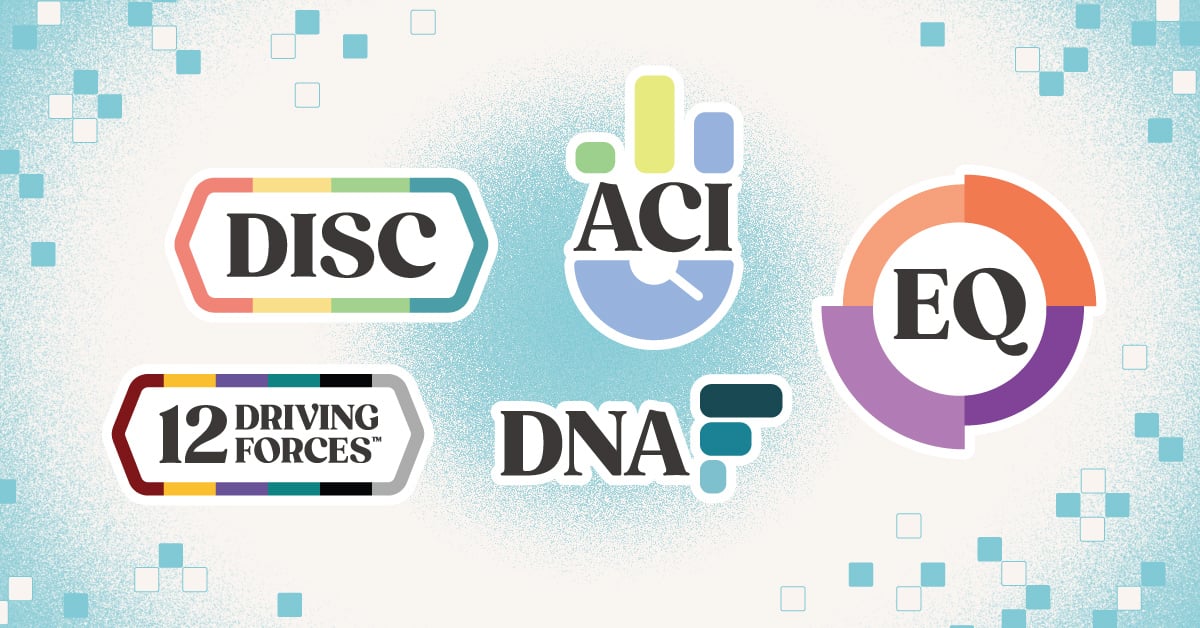 Your eyes are barely open when the marketing messages begin. Whether it's logging on to check your emails, scanning Facebook or turning on the TV, we are constantly blasted with messages on everything from what to eat, how to stay in shape, to where to go to find that perfect marriage partner. Which messages actually break through the clutter and speak to us? What gets our attention through the cacophony of noise and drives us toward action?
Your eyes are barely open when the marketing messages begin. Whether it's logging on to check your emails, scanning Facebook or turning on the TV, we are constantly blasted with messages on everything from what to eat, how to stay in shape, to where to go to find that perfect marriage partner. Which messages actually break through the clutter and speak to us? What gets our attention through the cacophony of noise and drives us toward action? Onslaught of marketing messages
Most messages are just noise that we filter out. Since we are constantly bombarded with messages, unless it strikes a chord with us, we may not even realize we experienced the message in the first place. But others have the ability to grab our attention like our grade school principal did when we acted out. Have you ever noticed that when you’re in the market for a new car, you notice every single car commercial? Or do you notice that when you’re hungry, it seems like the only thing on TV are commercials for fast food? It’s because at that moment in time, we are on that particular wavelength, and the message hits us. So the million dollar question is how can a company send a message that hits the mark more times than it misses? And how can they hone in on the exact audience they are trying to reach? By understanding the basic dynamics of generational marketing a company can harness its power to talk directly to its target audience and do so with great success. And these applications can be used to market, sell, recruit or just about anything a company hopes to accomplish.
Defining Generational Marketing
Generational marketing, in a nutshell, is marketing that target groups of people that share common attitudes and beliefs based on events, developments or trends based over a particular span of time. Major events during each group’s formative years act as a defining bond that ties these groups of people together, regardless of their race, ethnicity, gender or other separating factors.
At any given point, five unique generations exist together in society, and typically four groups will be active in the workplace. As members of the aptly named Greatest Generation (born 1929 or earlier) leave this world, we are left with five distinct generations that have vastly different values, beliefs and motivators. Understanding these differences can help a marketer send a message in a language that each group relates and responds to making them much more effective.
The five distinct generations in today’s society include:
- 1. The Silent Generation (born between 1930-1945)
- Baby Boomers (1946-1964)
- Generational X'ers (1965-1980)
- Millennials (1981-1999)
- Generation Z (2000-current)
Since these groups have very specific shared life experiences that occurred during their formative years, it makes them each uniquely different from each of the other groups. Understanding these differences and the subsequent behavioral attitudes that spawn from this will make communicating with each group much more effective.
Unique traits of each generational group
Marked by World War II and the remnants of The Great Depression, The Silent Generation loves their country and understands the value of money. This group boasts many avid readers and enjoys purchasing items through mail order catalogues, tending to avoid online purchases which they distrust. They value honesty and integrity above all and though they have been conservative with their money throughout their lives, they are willing to spend for that once in a lifetime house, car or vacation they've always dreamed about. Looking into the eyes of a member of the Silent Generation when speaking with them is viewed as a sign of respect while the avoidance of eye contact is viewed as disrespectful and cause for concern or distrust.
Baby Boomers are identified by events such as the Kennedy assassination, the equal rights movement and the hippie generation/Woodstock. At their height they were 80 million strong making them the largest group for decades until the Millennials recently took over that title. Boomers value a strong work ethic and tend to spend their whole careers working in one industry, often with the same company. Loyalty is important as are values and morals. This generation’s dream growing up was to own their own home with a white picket fence. Nowadays, they want to spend their money on items that announce to the world that they have "made it," especially that status symbol Mercedes Benz or the vacation home on the beach. Baby Boomers continue to value live interaction with other human beings and will always prefer a phone call over an email. Once a Bud man, always a Bud man, this is the generation that would stick to one beer brand throughout their entire lives, not feeling any urge to venture outside their comfort zone.
Generation X is sometimes called the middle child and for good reasons. Originally thought of as a rebellious group, Gen X'ers today tend to lean toward conservative and traditional ideals. This is the MTV generation that have lived on both sides of the technological world. They know a world of face to face communication, yet embrace technology without much resistance. The X’er generation went from 8-tracks to cassettes to CDs to videos to mp3s, moving seamlessly through the process. Gen X'ers are brand loyal yet willing to try new things outside their comfort zone compared with their Boomer parents. Despite being open to technology, this group enjoys coupons by mail and supports "do good" brands, especially those that are healthy and/or organic. Generation X'ers still prefer to send birthday cards through the U.S. Mail to close friends and family as opposed to sending email or Facebook greetings. Because they grew up pre-internet, Gen X'ers can shop both brick and mortar and online without a defined preference for either.
The Millennials are the apple of a marketer's eye. Not only are they the largest single group, they are relatively young. Attracting their attention now could mean having a customer for many, many years to come. Millennials are defined by 9/11, technology and electronic pop music. They tend to be more liberal than Gen X'ers and look for incentives to make purchases through social media channels. This group will sign up for your social media page if you give them an incentive to do so. This group values love of their job even more than the compensation they receive for doing the job. They will take less money if it means doing a job they truly enjoy. Millenials love the next big thing and that's why they camp outside the Apple store anxiously awaiting the next release of the iPhone. Online shopping is the norm and Millennials do not particularly enjoy visiting brick and mortar stores. In fact, their buying decisions tend to be influenced online through Facebook, Instagram and through recommendations, so online reviews carry a lot of weight with them. Defined by a very short attention span, this group wants instant gratification and they want it yesterday. Major League Baseball demonstrates this fact as they continue to find ways to speed up the game knowing that if this generation doesn't embrace baseball, the sport may suffer in the long term. Millennials are a powerful, influential generation and one that any forward-looking company needs to embrace to be successful in the long run.
The newest generation, Generation 9/11, also known as Generation Z, continues to take shape and is just starting to enter the workforce. Technology continues to rule their lives and people of this generation think traditional phone calls are an antiquated notion. Gen Z members would much rather "talk" to their friends via a text message and their attention span is but a fraction of that of the Gen X or Boomer generations. If you want to get their attention, make it quick and do it electronically because the only thing this generation knows about a newspaper is that it is used to line the birdcage.
Key takeaways
What can talent management professionals learn with this information? Fish where the fish are! If you are trying to reach a baby boomer, a newspaper ad may be a good idea, but it will certainly be lost on a member of Generation Z or a Millennial. Does your product speak to tradition and values? That message is likely to resonate far more with a Baby Boomer than a Millennial who would rather relate to a message that speaks to instant gratification. How a company communicates is key. While Baby Boomers, for the most part, can navigate through Facebook, they still prefer traditional channels for their marketing messages such as coupons, newspapers and billboards. Millennials and Gen Z’s want their messages exclusively electronically and preferably within platforms they view on their computer, not their cell phones. Advertising messages on their phones feel intrusive to these groups and can be perceived negatively for this reason. Gen X’ers react to direct mail though don’t spend too much time reading newspapers anymore
Real life examples
A large corporation is looking to expand and needs to fill several newly created positions. But how they reach people of the various generational groups and the messages they send are as different as night and day. To reach a Baby Boomer, it’s a great idea to tell a story about the company’s reliability, dependability and brand loyalty of its customers. It’s best to tell that story in a newspaper ad. To reach a member of Generation X, talk about the value the company provides, and any public outreach/charitable work in which the company participates. Gen X’ers are just as likely to look for a job listing on Craig’s List as they are in a newspaper, but you may find great results reaching them via direct mail and email marketing.
If you want to hire a Millennial, your message better talk about what makes the company special and innovative, and how that particular millennial can have an immediate impact. Of vital importance is having plenty of reviews online that state your company is a great place to work. Millennials rely on what their peers think so reviews are a key part of the research for this group. They can reached best through online job boards, social media messages and podcasts. For members of the Generation Z group just entering the workforce, your message should be quick, concise and satisfy their high expectations and quest for individuality. Your company needs to show this group exactly what skills they can learn by being part of your organization and how it can enhance their personal value in the workplace. Members of Gen Z will want to feel that their work is meaningful and that they can make a difference. Besides using social media, online ads and podcasts, YouTube videos can help deliver your company’s message to this continuously online, on-the-go group. Don’t even think of reaching these folks through any form of print media.
Understanding who you are trying to reach, what interests them, and knowing how to appropriately frame and deliver your message will help you achieve great success in your hiring practices. For more real life examples of how to market to the various generational groups, please see Wordstream’s take on the subject.



